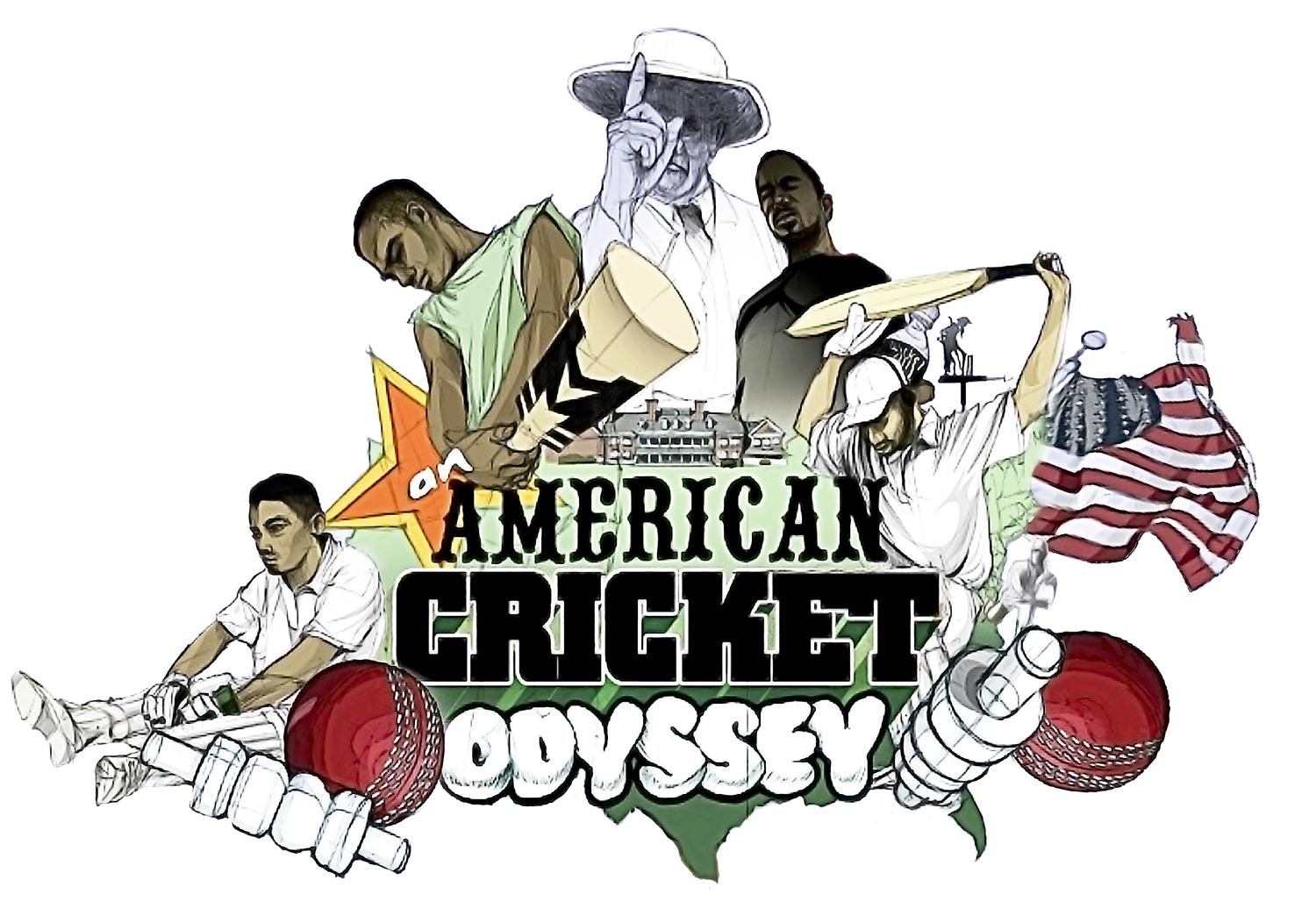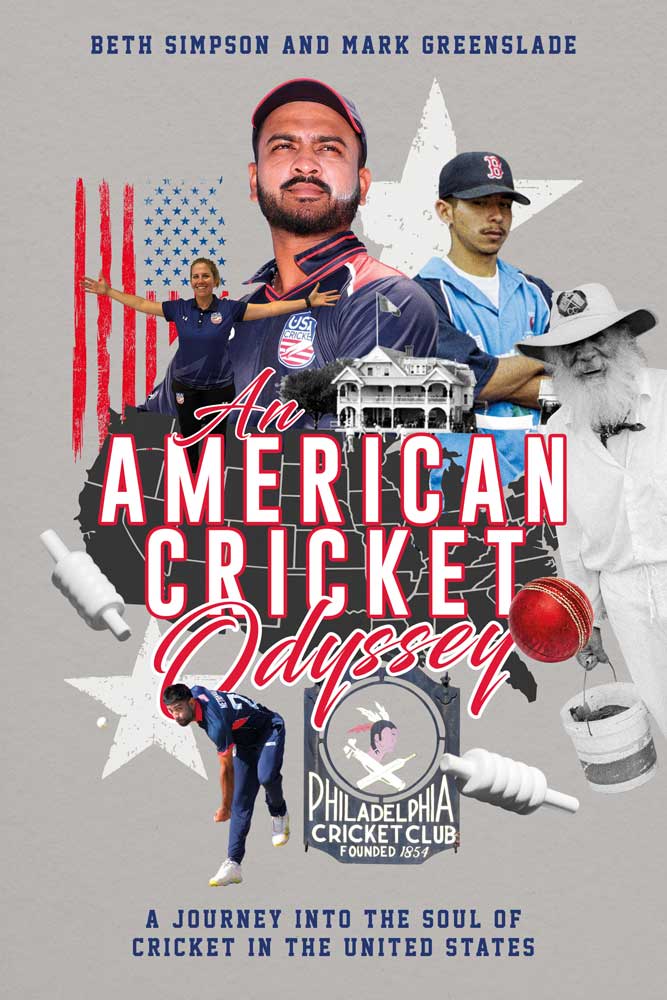
This is the story of US cricket in the 21st Century, a game that was once a proud member of the family of American sports, lost its way and is now finding a route back home. Along the way we meet its players, movers, shakers, dreamers and schemers, its romantic souls and lost causes and as the sport—and nation—stands at a crossroads look at the path that lies ahead.
IT'S OUT NOW!
It is due to come out in the US on October 28.
The book has finally been published in the UK. It's available at all good book shops, through Waterstones, Foyles, WH Smiths and Amazon. You can order it through the Pitch Publishing website too.

Our journey begins in Philadelphia, the city where cricket’s roots drove deepest in the social and cultural fabric. We briefly describe the history of the game in the city and visit the nearby museum that is the only archive dedicated to the sport in North America. From there we travel to the grandly designed country clubs—Merion, Germantown and Philadelphia CC—where you can still glimpse cricket’s glorious past as a popular sport amongst an Anglophilic leisured class and meet the individuals who have revived the sport among a similar social set in the 21st Century.
In Chapter Two we travel to South Central Los Angeles to meet Ted Hayes and the Compton Homies and Popz, the first completely US-born cricket team of the modern era. A homeless activist and street politician, Hayes saw potential of cricket to turn around the lives of young men on the edge of inner city gang culture, by teaching them the values of self restraint and etiquette. Incredibly Hayes and his partner Katy Haber built a young team in this most unlikely of urban environments. This chapter will describe their progress, the constant difficulties they have faced and the often comical episodes that have taken place on their travels to Lords, Belfast and Melbourne.
New York has long been the epicentre of US cricket. It was here that the sport was kept alive in the mid to late Twentieth Century by generations of Caribbean immigrants, and it is also here where many of its most important new developments can be found. We meet the enthusiasts who are bringing cricket into schools and developing the game amongst New York youth, and dive into the thriving subculture that is cricket, NY style. Along the way we encounter characters that inspired an author to write a critically acclaimed, Presidentially-recommended novel, depicting this subculture with sincere affection.
USACA, the governing body of US cricket, was for so long the black hole at the heart of the US game; its name a byword for incompetence and mismanagement. In this chapter we meet some of the key players in the administration of the game, including its long serving president, a fellow both equally respected and reviled. We observe the dysfunctional relationship between USACA and the ICC, and track a tragi-comic progress towards some semblance of professionalism.
It has long been assumed that at the end of US cricket’s rainbow there lies a pot of gold. Over the past decade the sport has attracted a number of individuals who have taken it upon themselves to promote the sport via ambitious, often hare-brained schemes. These have ranged from attempts to kickstart professional leagues to plans to construct stadiums from scratch. In this chapter we meet these Walter Mitty-like figures, hear about their dreams and consider whether any of their ideas stand a chance of transforming US cricket.
We travel down to Florida, more specifically to Broward County, the scene of the infamous electoral controversy of 2000, and witness a remarkable project come to fruition. The story of the construction of the first purpose built cricket stadium in the US illustrates that when US citizens with no previous exposure to the game catch the bug then remarkable things can and do happen. We meet a Mayor and his team implementing policy voted upon and paid for by the local voters, and compare and contrast Broward County’s story to what happened when similar stadium projects were developed in Indianapolis and Morrisville, North Carolina
.At present, cricket is widely regarded in the US as a migrant sport played by those with a South Asian (and to a lesser extent) Caribbean heritage. In this chapter we meet the Americans who have fallen in love with the sport who don’t come either of these backgrounds, those ‘natural-born’, in many cases white, Americans who have caught the bug. And we ponder the chances of the game to penetrate the mainstream of US sports, into the heart (and hearts) of the nation?
Unhindered by the malefic animus that stalks the men’s game, the US women’s team has made huge strides in recent years. In this chapter we tag along with the players and coaches who have carved out a place for themselves in the women’s game. With guts and determination and sheer bloody mindedness they kept the flame flickering during the dark years of the US’s banishment from the global game and are now starting to reap the benefits. Just as the women's game blazed a trail in the development of soccer in the States, we ask whether the same thing could happen in US cricket.
The United States was the first associate member of the ICC, joining in 1965, but it was soon overtaken by rapidly developing cricketing nations such as Sri Lanka and Bangladesh and, in time, many others. Since then the national team’s progress has been fitful. In 2004 they qualified for the Champions Trophy in England and played against the Australian and New Zealand one day teams. But the following year the same side took two massive steps backwards when they were humiliated in a World Cup qualifying series in Ireland. The next decade was spent attempting to dig themselves out of an administrative and developmental hole that was arguably of their own making, before a fresh start is imposed upon them from above. This chapter traces this process, uncovers unusual approaches to team selection and describes the US national team’s long and arduous road back to respectability.
The main hotbeds for cricket in the US are New York, Florida and California, but pockets of interest in the game are dotted around the country, including a number of backwaters where you would never expect it to flourish such as North Dakota, Montana and Nebraska. Here we report from these outposts and the teams and individuals keeping the cricket flag flying.
In this final chapter we bring the story up to date with the re-entry of the US into the ICC and the game’s global structure post-2018. We look at how the giants of the IPL chose to invest in the sport and created Major League Cricket, preview the first major cricketing event to be staged in the US—the T20 World Cup in 2023—and we consider whether it constitutes a turning point not just in American cricket’s journey back towards respectability. Finally we reflect upon the insights this Odyssey has provided into the unique, paradoxical and often misunderstood nature of US culture.